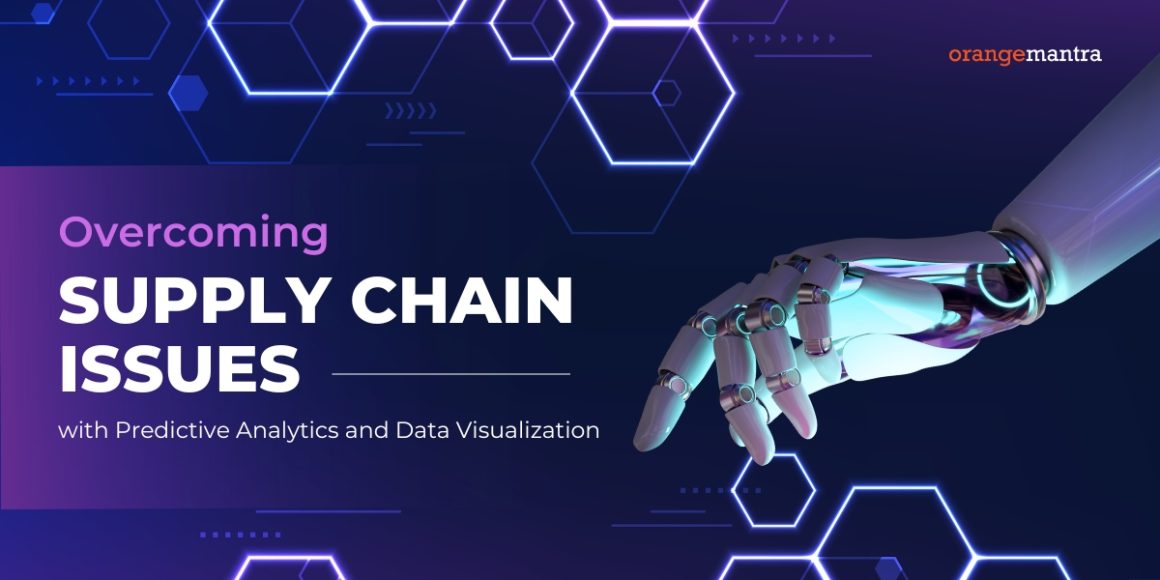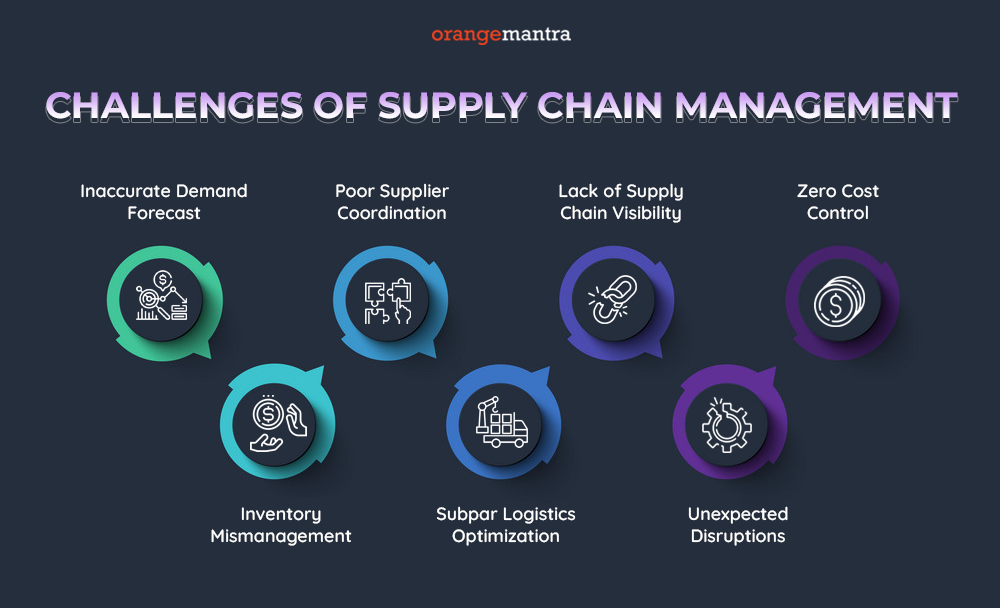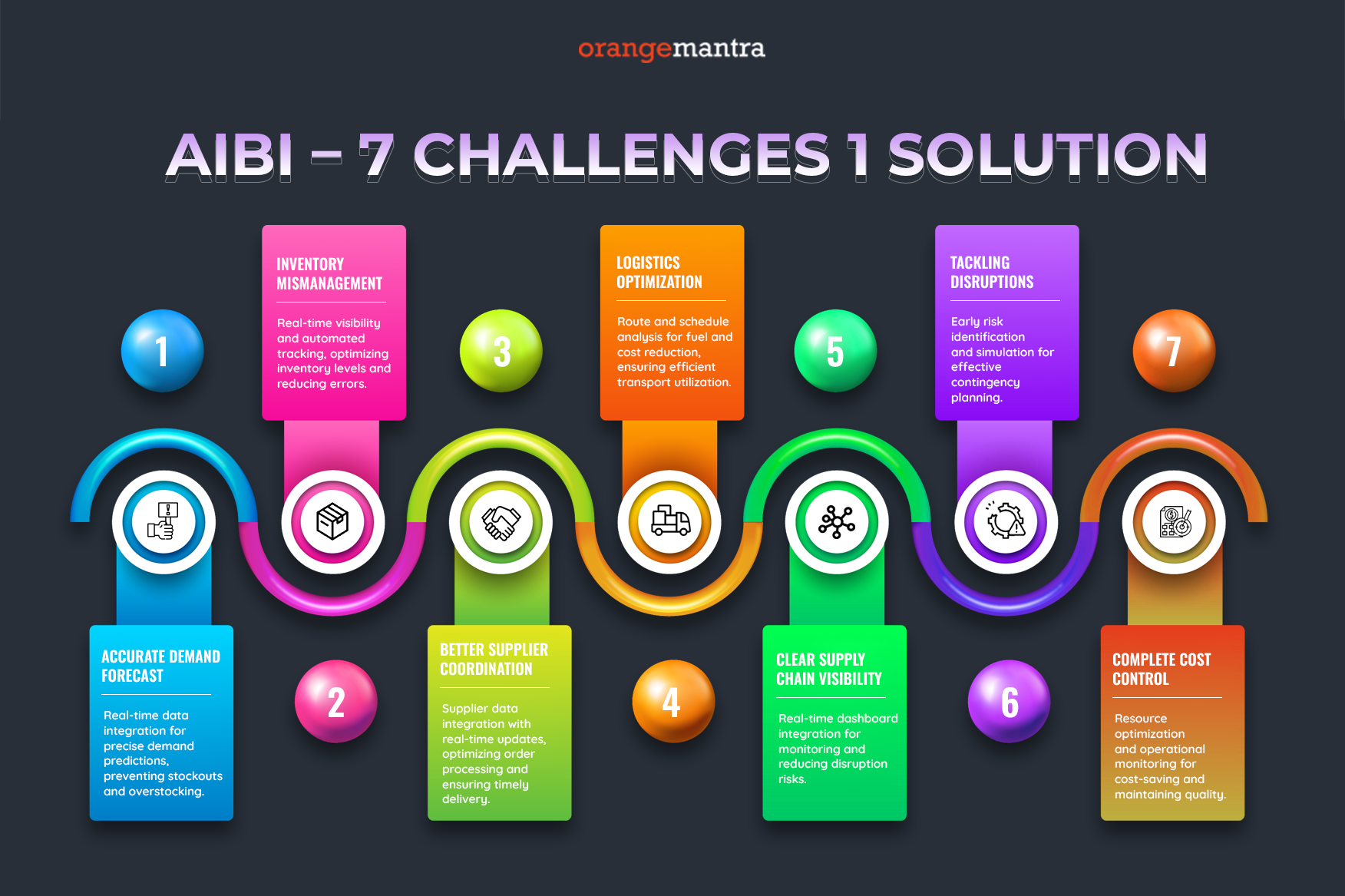What if you could see your whole supply chain like a movie?
What if you can see all the relevant data drawn like a picture before you?
Even better, how about having the ability to use all your data for accurate future predictions?
Will it not make your life easier? Opening so many opportunities and ironing out so many obstacles.
Because when you can see the future, bad decisions will become a thing of the past.
No lagging behind on trends, no dissatisfied customers, and no operational bottlenecks on one side. Streamline operations, optimize resource utilization, cost saving, and competitive edge on the other.
And this is exactly what our product AIBI does for you.
In this article, we will explore the possibilities of AIBI to transform your supply chain management.
So, without any delay, let’s start by understanding how AIBI helps you overcome the most daunting challenges in your supply chain.
Table of Contents
Challenges of Supply Chain Management
Given the heightened complexity of business operations, managing the supply chain is increasingly becoming a daunting task.
Inaccurate Demand Forecast
70% of consumers are likely to switch brands after encountering stockouts. (ERC Europe)
Market forces change course too quickly, too frequently, and too radically, with market demand being one of these volatile forces.
So, if you fail to keep up with such changes it leads to issues like overstocking, resulting in excess inventory costs, or stockouts, causing lost sales and customer dissatisfaction.
But more importantly, it can strain your relationships with suppliers, customers, and even partners.
For example, if suppliers and sales professionals are caught off guard by unexpected demand fluctuations by not getting timely delivery from your end, the loss of sales opportunities will lead to the loss of trust in your brand.
Inventory Mismanagement
Inefficient inventory management leads to high carrying costs resulting in more inventory than is actually needed. This leads to higher costs related to storage, insurance, and depreciation, increasing the overall expenses.
Second, it may lead to inaccuracies in inventory records, i.e. the actual stock levels do not match what is recorded in the system, leading to confusion and errors in order processing.
Lastly, it can lead to missed order delivery deadlines as items may be out of stock when needed.
All this will have a considerable effect on overall profitability and customer trust.
Poor Supplier Coordination
Poor coordination with suppliers is another serious challenge with considerable repercussions. it can exacerbate your supply chain vulnerabilities, making it harder to respond to market changes and increases the likelihood of disruptions
Caused by inefficient communication and planning, it leads to
- Supply delays
- Misalignment with demand forecasts,
- Increased operational costs and
- Breached delivery deadlines.
Extended order processing and delivery time increase the lead times. Plus, you need to incur higher costs due to rush orders or emergency sourcing.
Subpar Logistics Optimization
Ineffectively planned logistics increases your transportation costs, delivery times, and carbon footprint. This is because now you need to deal with suboptimal routing that adds to your fuel consumption, while exacerbating your reliance on expedited shipping methods.
Further, poor logistic planning will also result:
- Empty or partially filled transport vehicles,
- Longer travel distances,
- Stressed resource or their shortage
- Delays in order fulfillment
All of this contributes to reducing operational efficiency, increased costs, and more importantly greater environmental impact and reduced customer satisfaction.
Lack of Supply Chain Visibility
Lack of real-time visibility into supply chain operations blocks your ability to monitor or track the process. Thus, you are not able to track the status and movement of goods, inventory levels, and other important supply chain activities as they happen.
These can be various visibility barriers such as
- outdated technology
- data silos
- poor communication between stakeholders,
- or insufficient integration of systems.
The results in delayed responses to issues, increases risk of disruptions, and inability to track performance metrics accurately.
Unexpected Disruptions
One of the most critical challenges in supply chain management is identifying and mitigating unforeseen risks. These can be in any form:
- Transportation Disruptions
- Natural Disaster
- Cyber Attacks
- Regulatory changes
- Pandemics
These unexpected disruptions not only lead to financial losses but also damage your brand reputation due to poor crisis management.
Zero Cost Control
Controlling costs is also a considerable challenge because as a successful business you should be optimizing resources while maintaining high-quality standards.
Failing to do so will erode profit margins, making it difficult for you to remain competitive.
AIBI – 7 Challenges 1 Solution
Accurate Demand Forecast
Our AIBI tools integrates and visualizes real-time data from multiple sources such as sales data, market trends, social media insights, and historical data, bringing you a comprehensive, up-to-date view of demand patterns and help you in making more accurate demand forecasts.
Second, AI algorithms are best known for their analysis of vast amounts of historical and real-time data. Tapping on this capability, AIBI is a game changer as it can predict future demand with high accuracy, identifying patterns and trends not visible through traditional forecasting methods.
Thus, it prevents stockouts and overstocking and empowers your decision-making as you can see real-time inventory levels and demand trends on your visual dashboard. It leads to reduced excess inventory costs, minimized stockouts, and to achieve higher customer satisfaction and loyalty.
Inventory Mismanagement
AIBI streamlines inventory management by providing real-time visibility into stock levels and automating inventory tracking. It can predict optimal inventory levels based on historical data and demand forecasts, thereby reducing your carrying costs.
Also, AIBI is able to detect discrepancies between actual stock and recorded inventory, thus, helps you minimize errors in your order processing, meet delivery deadlines, improve profitability, and maintain customer trust.
Better Supplier Coordination
AIBI integrates data from suppliers and provides real-time updates on supply status. This helps you avoid delays and misalignment with demand forecasts.
It optimizes order processing and delivery schedules to reduce lead times and operational costs.
Thus, it facilitates effective communication and planning for better supplier coordination to ensure timely delivery, minimum rush order needs, and strengthens the overall supply chain’s responsiveness to market changes.
Logistics Optimization
AIBI is able to analyze transportation routes, delivery schedules, and resource allocation, helping you optimize your logistics by.
It offers smart recommendations for choosing the best route to reduce fuel consumption, transportation costs, and delivery times.
With intelligent and data-driven load planning it makes sure that your transport vehicles are fully utilized, with minimum empty or partially filled trips.
Thus, it improves your overall operational efficiency, decreasing your carbon footprint, and delivering high customer satisfaction through timely order fulfillment.
Clear Supply Chain Visibility
As mentioned earlier, AIBI integrates data from various sources and shows a clear picture on the virtual dashboards. This way, it brings you real-time visibility into your supply chain operations including alerts.
You can monitor the status of all the critical activities, track your performance metrics accurately, respond promptly to issues, and reduce the risk of disruptions.
Overall, it helps you achieve a more transparent and efficient supply chain.
Tackle Unexpected Disruptions
Managing unforeseen risks becomes way easier with AIBI.
Thanks to its ability to process data of colossal volume in matter of minutes, it is able to identify and mitigate these risks by raising early warning signs of disruptions.
Also, it models and simulates various risk scenarios to help you develop an effective contingency plan for transportation disruptions, natural disasters, cyberattacks, regulatory changes, and pandemics.
As a result, you minimize financial losses, maintain and protect your brand reputation, and are more capable of effective crisis management.
Complete Cost Control
AIBI optimizes your resources and helps you meet high-quality standards, cornerstone for cost control.
It analyzes operational data to spot cost-saving opportunities and continuously monitors and adjusts operations to ensure you can control costs without compromising quality, protecting your profit margins and maintaining competitiveness.
Conclusion
Supply chain management is one of the most critical and challenging business components. While a well-managed supply chain can result in a faster and hassle-free flow of goods ultimately to healthy relationships with customer and supplier, ineffective supply chain management can strain the same and damage your brand reputation.
In such a scenario, adopting and integrating new technologies for continuous improvement and streamlining is the only solution.
Now, we are at the doorstep of the era of Artificial Intelligence (AI), it is the only way forward.
AIBI helps you navigate this territory with ease and efficiency, you would not even realize but you will certainly be surprised with the possibilities as now you can capitalize on large data with just one click and reduce operational costs and increased customer satisfaction.
FAQs
What is AIBI?
It is an AI-powered predictive analytics and data visualization tool to help businesses improve their supply chain management. Its capabilities include providing actionable insights for informed decision-making and optimized operations and predicting future trends to make businesses ready for challenges and opportunities.
How does AIBI help with demand forecasting?
AIBI uses advanced machine learning algorithms to analyze past data and market trends. Then based on its findings, it makes data-based demand forecasts. This helps businesses in reducing overstocking and stockouts.
Can AIBI integrate with our existing systems?
Yes, with ease. AIBI is designed in a way to blend perfectly with the existing systems such as ERP, CRM, and other enterprise systems. From all these systems, it pulls the data in and creates a unified view of different levels of the organization as well as on the level of organization. This way it makes sure that there is a smooth data flow and comprehensive analytics across all business operations.
How does AIBI improve inventory management?
AIBI offers real-time inventory tracking and predictive analytics. This helps businesses optimize their stock levels, minimize carrying costs, and reduce stock discrepancies, resulting in efficient inventory management.
What benefits does AIBI offer for supplier coordination?
As AIBI provides a centralized platform for communication, real-time updates, and predictive analytics. For supplier coordination, it helps in reducing lead times and lowering costs associated with rush orders.
How can AIBI optimize logistics?
AIBI uses predictive analytics for smart route planning, well-coordinated transportation schedules, and lowered transportation costs. This improves delivery times and operational.
What is supply chain visibility and how does AIBI provide it?
For supply chain visibility, AIBI integrates data from various sources and presents it at one place on a single dashboard in real-time and in an intuitive manner.




